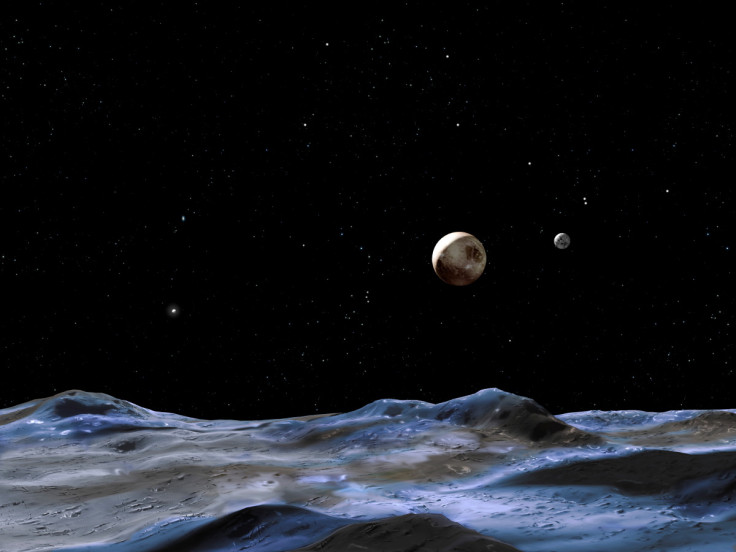Nasa's New Horizons Spacecraft to Probe Pluto's Moon Charon For Ancient 'Underground' Liquid Ocean

Nasa's New Horizons mission, which is due to arrive on Pluto next year, will explore the possibility of an ancient subterranean liquid ocean buried under the surface of the dwarf planet's largest moon, Charon.
Astronomers believe that Pluto, which orbits the Sun 29 times further away than Earth, may have once harboured large underground oceans. According to a Nasa-funded study, the cracked surface of the dwarf planet indicates that its interior was once warm enough to support an ocean.
Temperatures on Pluto are too cold for liquid water to exist on the surface, at around 380 degrees below Fahrenheit. Other icy moons, however, such as Saturn's Enceladus and Jupiter's Europa, have underground oceans hidden under their frigid surfaces.
According to the researchers, it is possible that Charon resembled these two moons in the past.
"By comparing the actual New Horizons observations of Charon to the various predictions, we can see what fits best and discover if Charon could have had a subsurface ocean in its past, driven by high eccentricity," Alyssa Rhoden, of Nasa's Goddard Space Flight Center, told the Tech Times.
In 2006, Nasa launched New Horizons to study Pluto, seven months after it was demoted to "dwarf planet" status. The spacecraft is now more than halfway between Earth and Pluto and is due to fly past the dwarf planet and its moon in July 2015.
Nasa have hopes the mission will reveal more information about Pluto's moons and the possibility of evidence of ancient oceans.
"Since it's so easy to get fractures, if we get to Charon and there are none, it puts a very strong constraint on how high the eccentricity could have been and how warm the interior ever could have been," Rhoden added, as reported by Nature World News. "This research gives us a head start on the New Horizons arrival - what should we look for and what can we learn from it."
According to researchers, friction created by tidal forces earlier in the solar system's history could have warmed Charon's interior.
Europa, which orbits Jupiter, and Enceladus, around Saturn, are each pulled in an oscillating fashion in their orbits by other moons, which prevents them from settling in a calm orbit. The action creates internal heating, which may have been warm enough to keep oceans in liquid form for long periods of time.
Researchers say a similar action on Charon may have allowed the moon to host an ocean of liquid water.
"Initially, there would have been strong tides on both worlds as gravity between Pluto and Charon caused their surfaces to bulge toward each other, generating friction in their interiors," Nasa said in a statement, as reported by Space.com.
The study was published in the journal Icarus.
© Copyright IBTimes 2025. All rights reserved.






















